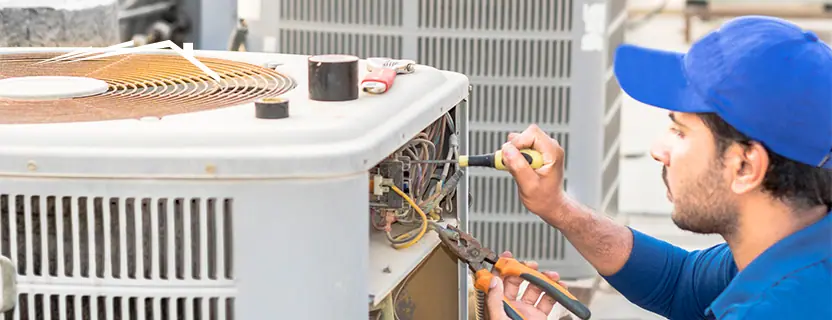The 2-Minute Rule for 1 Source Portable Air
The 2-Minute Rule for 1 Source Portable Air
Blog Article
Getting My 1 Source Portable Air To Work
Table of Contents1 Source Portable Air Fundamentals Explained3 Simple Techniques For 1 Source Portable AirSome Known Questions About 1 Source Portable Air.The Ultimate Guide To 1 Source Portable Air
Although references may appear testing to track, there are methods to identify them quickly and efficiently. On social networks, lots of people hand out references regarding a/c technicians that are reliable and specialist during an a/c setup, fixing or upkeep job. Considering that other customers can make comments, the procedure of figuring out whether or not a company is worth seeking is never a headache.

An organization that has actually built a strong online reputation generally has highly skilled professionals who totally comprehend how to tackle heating and cooling tasks that entail modern-day and vintage tools. Experienced service technicians need to always be considered during innovative repair and maintenance jobs since the treatments that educated professionals execute are affordable. Another advantage is that seasoned a/c firm contractors never use improper substitute products in order to simplify repair jobs.
Yeah, at NEXGEN Air, we're professional Cooling and heating service technicians, yet we recognize that not every person is. This is for real who have actually never ever had to deal with a HVAC issue.
Some Known Factual Statements About 1 Source Portable Air
Heating and cooling stands for home heating, ventilation, and air conditioning. 9 basic parts compose a complete central air conditioning and warm system. These parts are the heating system, the heat exchanger, the evaporator coil, the condensing system, refrigerant tubes, the thermostat, the ductwork, the vents, and the warmth pump. (Do not fret! We'll describe these components thoroughly better down the listing.) The heater is your home heating unit.
There are benefits and drawbacks to both, however we'll cover that in an additional area. You can discover your heating system hiding in your basement, garage, or utility closet. Your heater's main function is to warmth air and relocate it into your air ducts to warm your home. (Fun fact: Furnaces are generally misinterpreted for central heating boilers, yet they're separate home appliances). Right here's a wonderful instance of a new Lennox furnace in an utility wardrobe.

While the heating system presses hot air right into your air ducts, the warm exchanger is the one transforming chilly air into hot air. An additional resident inside the furnace, the evaporator coil absorbs any kind of warmth from air passing away over it to blow cool air via your vents and into your home. Your condensing system offers a comparable purpose as your evaporator coil but you can find the condensing unit outside, usually on the side of your residence.
Cooling agent tubes connect your evaporator coil to your condensing coil. Refrigerant tubes are usually made from metal and are designed to hold refrigerant and to connect the interior and outside units. Your thermostat is that little tool placed on the wall surface someplace inside your home that enables you to manage your home's temperature (do not ask us where to find your thermostat, there's no regulation regarding where they're placed - they can be anywhere!).
Getting The 1 Source Portable Air To Work
Your heating, air flow and cooling (A/C) system is one of one of the most essential systems in your home, running silently behind-the-scenes to take care of interior temperatures. Without heating and cooling, you would certainly be handling freezing temperature levels in the winter months and unmanageable warm in the summer. Heating and cooling systems likewise ventilate your home, keeping the air top quality healthy for your household to take a breath.
(https://www.linkcentre.com/profile/1sourceidaho/)

Keep reviewing to read more regarding choosing the appropriate heating and cooling system. There are several effective and cost effective choices readily available for upgrading your cooling and heating. Nevertheless, selecting the most effective HVAC system for your home relies on numerous individual variables and choices. A few things to take into consideration include the kind of system, energy performance and your budget plan.
Changing your system with a comparable configuration is likely the most economical alternative. Various other considerations include the environment and climate where you live and what gas resources are offered. If you want to discover more concerning just how cooling and heating systems operate in your region, ask regional contractors for suggestions for those in the Southeast, choosing the very best a/c system is most likely your leading priority.
The Greatest Guide To 1 Source Portable Air
Based upon your details, they can assist you make the finest decision for your home. The right sort of HVAC system depends on your demands. Although some cooling and heating systems combine heating & cooling in one package, others operate with different sorts of equipment. Some A/c systems rely on ductwork, while others are ductless.
Some systems heat water, while others use recurring heat in the earth or air to run. The ideal system for you relies on your budget and the equipment readily available in your location. A/c systems are managed by a thermostat, where you can establish and check temperature levels. Emergency AC rental. If you spend in a wise thermostat, you can change your HVAC system over a phone app and incorporate it with various other clever modern technology around your home.
You do not need an enormous Air conditioning system to cool a small house. To find the ideal choice for you, establish the square footage of your home and then contrast that with size graphes for the heating and cooling equipment. If you acquire an air conditioner for a 900-square-foot home, general standards suggest a device with around 18,000 British thermal units (BTUs).
While mounting Heating and cooling tools yourself might appear like a way to conserve prices, any type of issues could develop substantial expenses in the future. Paying a professional for their time is well worth getting the job done.
Report this page